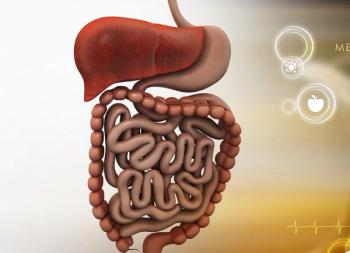
Thiotepa Conditioning Regimens Improve Survival in Primary Central Nervous System Lymphoma
An observational cohort study revealed that BEAM therapy led to subpar outcomes compared with thiotepa-based treatment for patients requiring conditioning regimens for primary central nervous system lymphoma.
Thiotepa-based therapies appeared to improve survival compared with carmustine, etoposide, cytarabine, and melphalan (BEAM) therapy before autologous hematopoietic stem cell transplant (AHCT) in patients with primary central nervous system lymphoma (PCNSL), according to data recently published in JAMA Oncology.
“Extrapolating from experience with systemic lymphomas, early AHCT studies for PCNSL used carmustine/etoposide/cytarabine/melphalan (BEAM) conditioning with disappointing disease control and survival results,” Michael Scordo, MD, of the Memorial Sloan Kettering Cancer Center, and colleagues wrote. “More recently, single-arm phase 2 studies demonstrated durable disease control and survival with central nervous system penetrant conditioning regimens, such as thiotepa/busulfan/cyclophosphamide (TBC) and thiotepa/carmustine (TT-BCNU).”
Scordo and colleagues performed an observational cohort study of patients with primary central nervous system lymphoma who received the 3 most common conditioning regimens: thiotepa/busulfan/cyclophosphamide (TBC), thiotepa/carmustine (TT-BCNU) and BEAM. The investigators conducted their study using data from 603 adults entered in the Center for International Blood and Marrow Transplant Research registry. All patients had received stem cell transplantation between January 2010 and December 2018.
Scordo and colleagues excluded patients who received uncommon conditioning regimens and patients who were not in complete or partial remission before receiving stem cell transplantation, as well as patients with HIV, non-Hodgkin lymphoma subtypes other than diffuse large B-cell lymphoma, and those with systemic non-Hodgkin lymphoma. The main outcome was progression-free survival (PFS). Secondary outcomes were overall survival (OS), nonrelapse mortality, incidence of relapse, and hematopoietic recovery.
Patients had a mean age of 57 years (range, 19-77) and most were men (53%). Those who received TBC and TT-BCNU demonstrated 3-year adjusted PFS rates of 75% and 76%, respectively, compared with 58% in those who underwent BEAM (P = .03). The investigators contributed this difference in survival to a significantly greater relapse risk for patients who received BEAM therapy (HR, 4.34; 95% CI, 2.45-7.70; P < .001).
Investigators reported that in a multivariable regression analysis, patients who received TT-BCNU had a greater relapse risk than those who underwent TBC (HR, 1.79; 95% CI, 1.07-2.98; P = .03). These 2 groups demonstrated a similar risk for all-cause mortality more than 6 months after stem cell transplantation (HR, 1.54; 95% CI, 0.93-2.55; P = .10). The TT-BCNU cohort also showed a lower risk for nonrelapse mortality (HR, 0.50; 95% CI, 0.29-0.87; P = .01).
The study was limited by potential biases in patient selection and center-specific practices regarding choice of conditioning regimens, the investigators wrote. In particular, they noted that the use of thiotepa-based regimens had been used more than BEAM in recent years. Further, the investigators wrote that “important data elements were unavailable, including the types of methotrexate-based induction used, whether or when patients received whole-brain radiotherapy, whether pharmacokinetically targeted busulfan was used, if additional consolidation was used after HCT and which therapies were used after relapse, such as immunotherapies and Bruton tyrosine kinase inhibitors.”
“In this study, thiotepa-based conditioning regimens were associated with favorable outcomes, suggesting that the use of carmustine/etoposide/cytarabine/melphalan should be avoided in patients with PCNSL,” Scordo and colleagues wrote.
Reference
Scordo M, Wang TP, Ahn KW, et al. Outcomes Associated With Thiotepa-Based Conditioning in Patients With Primary Central Nervous System Lymphoma After Autologous Hematopoietic Cell Transplant. JAMA Oncol. May 6, 2021. doi:10.1001/jamaoncol.2021.1074
Newsletter
Stay up to date on recent advances in the multidisciplinary approach to cancer.

























































































